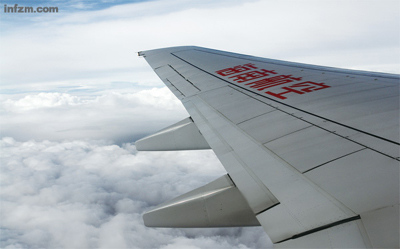(Ecns.cn)--Over the last two decades, Hainan Airlines (HNA) has grown into an industry giant, its assets expanding from the petty start-up capital of ten million yuan to a business worth over 100 billion yuan.
HNA is China's first civil aviation company to be listed both on China's A and B stock exchange. It is also listed on the Hong Kong stock exchange. Hainan Airline Group (HNA Group) is the dominant shareholder of HNA, with over five hundred companies under its umbrella that cover aviation, logistics, finance, tourism, and more.
HNA Group is distinct from other major Chinese airlines by virtue of its plying multiple areas of business. As a comprehensive group, it frequently makes large-scale and aggressive acquisitions to promote its development. Recently, it failed in two acquisition attempts, a sign that the capital market has its reservations.
At present, HNA is partnering with local governments on land loans, part of an ambitious plan code named Super X, to realize total assets in the trillions of yuan.
"No one in China has really been able to read our mind,"HNA Group chairman Chen Feng has said on many occasions. True. The HNA Group's strategy grows ever more complicated, a mystery reporters from the Southern Daily set out to unmask.
Big appetite and heavy debt
HNA Group has a big appetite. Within the last three years it has splashed around at least ten million yuan in the domestic market making acquisitions that include the listed companies Jinhai Heavy Industry and Nine Dragons, as well as investing in supermarkets, property, insurance and other lines of business.
HNA Group invests generously in the international market as well, purchasing 38 high-end commercial airliners, and then setting its sights on Malev Hungarian Airlines, Turkish Airlines, GE SeaCo, the high-end chain hotel Amanresorts International and others. These projects required dozens of billions of yuan.
This is surprising if you consider the fact HNA Group is not as rich as it seems. According to a report they issued on December 1, 2011, it owned net assets worth 9.9 billion yuan by the end of 2010. Its total assets come to over 110 billion yuan, but it is also burdened with a heavy debt load of nearly 87 billion yuan and a debt ratio of approximately 78 percent.
People couldn't help wondering how HNA Group could afford such expensive acquisitions. Where did it get the money?
Financing, the life jacket
HNA has been needy since birth. The Hainan government gave founder and chairman Chen Feng 10 million yuan in start-up capital in 1989; the sum was far from enough to buy even one airplane.
HNA made itself into a legend, going from a little nobody to the competition, in league with the top three state-owned air lines. Financing was the only way for HNA to survive and thrive.
At the early days, Chen Feng had to sell his vision of HNA's infinite potential to the banking sector and private investors. It turned out the banks bought it and offered loans. Internationally profiled investor George Soros incorporated some of his cash into HNA too.
Chen and his team explored multiple financing channels, and successively issued Hainan Airlines A-shares, B-shares and H-shares in the mid and late 1990s. HNA financed over 900 million yuan on the A share market in 1999.


















